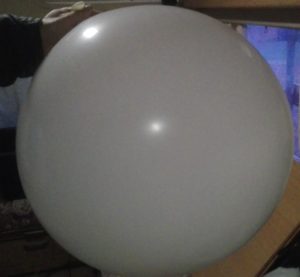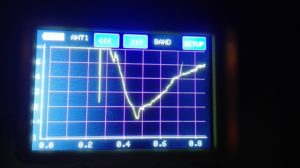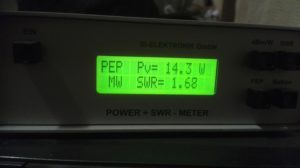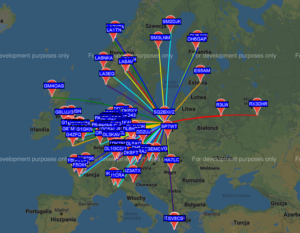Autumn and winter are great for experimenting on the medium wave band. We’ve tried a 150m baloon-lifted antenna.
Our objectives were:
- To see how a quarter-wave vertical works at 472kHz
- Testing the hydrogen generator
- Determining how much weight can be lifted by a 1m diameter baloon, and how it will behave in the wind.
The results are encouraging. This is an analysis of the experiment:
- During the experiment we had very strong wind with gusts up to 15m/s. This, combined with rain, damaged the baloon. In these circumstances a kite would have probably been better. Unfortunately we couldn’t do the experiment when the weather was better. During high winds a string support is needed for the base antenna line. At first we’ve tried a fibreglass/epoxy fishing rod, but the forces were too strong and we had to change it for a wooden pole.

2. It’s best to use a copper-covered welding wire. It’s strong enough and very light. Unfortunately aluminium wire is not strong enough. It’s also best not to use wires covered in isolation, because of their additional weight.
3. If the antenna is to be used during the night, there has to be some means to show the baloon position. We think that it is sufficient to use a simple pulsating LED light powered by a watch battery.
4. The antenna was tuned to resonance with an antenna analyzer by varying the antenna length. This way we were able to quickly determine the correct length of the wire. The SWR varies with the antenna position relative to earth, the range is about 1.3 – 2.3.

5. For ground we used an earthing rod in a 13m deep well. The resistance of this ground is 37Ω at 70Hz, at 472kHz it is probably much higher. The antenna impedance was about 200Ω, so we needed to use a 1:4 transformer to match the antenna. The theoretical impedance of a quarter-wave vertical is around 35Ω, so the rest (200Ω-35Ω=125Ω) is due to loss. This calculates to antenna efficiency around 15%, so we need around 15W to get to the 1W EIRP legal limit.

6. The signal was received by many european stations. Unfortunately the baloon was destroyed by very strong wind and rain before the transatlantic propagation time.

7. The optimal way of generating hydrogen in an amateur setting is the reaction betweem aluminium and NaOH (sodium hydroxide) solution One should not use aluminium dust or fine filings, because the reaction is too quick and overheats. Aluminium soft-drink cans are covered with paint, and the reaction goes too slowly in this case. Larger aluminium shavings are optimal. NaOH can be purchased as pellets used for unclogging pipes. The generator consists of three parts: a hydrogen generator (bottle with the NaOH solution and aluminium), a scrubber (bottle with water that the gas passes through) and preferably a dessicator (third bottle with solid dessicant). You should wear protective gear at all times, and take measures not to harm yourself. A concentrated NaOH solution will cause permanent damage to eyes and the rest of the body. If in doubt, consult a chemist (both of the founders of klubnl.pl have a masters degree in chemistry).
